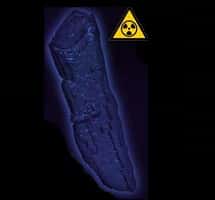We elaborate the uses of neon and atomic properties with characteristics. Neon is a colorless-looking chemical element with atomic number 10. Its symbol is Ne and it belongs to the group of noble gases and its usual state in nature is gaseous. Neon is located at position 10 on the periodic table.
You Can Visit Our Managed: Periodic Table Main Page
On this page you will discover the chemical properties of neon and information about neon and other elements on the periodic table such as helium, argon, fluorine or boron. You will also learn what neon is for and you will know what its uses are through its properties associated with neon such as its atomic number or the usual state in which neon can be found.
You will see qualities of neon such as its melting and boiling point, its magnetic properties or what its chemical symbol is. In addition, here you will find information about its atomic properties such as the distribution of electrons in neon atoms and other properties.
For some elements, some of this information is unknown. In these cases we show the properties attributed to them.
Neon Properties
Noble gases like neon have little tendency to participate in chemical reactions. Neon, like other noble gases, has the following properties: It is colorless, odorless and shows very low chemical reactivity under normal conditions.
The state of neon in its natural form is gaseous. Neon is a colorless looking chemical element and belongs to the group of noble gases. The atomic number of neon is 10. The chemical symbol for neon is Ne. The melting point of neon is 24.56 degrees Kelvin or -247.59 degrees Celsius or degrees Celsius. The boiling point of neon is 27.07 degrees Kelvin or -245.08 degrees Celsius or degrees Celsius.
Uses of neon
Neon is a very common element in the universe, but it is quite rare on Earth. Neon is not commonly used as it is a very expensive item. It can be worth 50 times the cost of helium as it is much rarer. If you’ve ever wondered what neon is for , here is a list of its possible uses:
- Neon is often used on billboards as it produces a bright reddish-orange color. Some lights of different colors are sometimes called neon lights, however these lights are produced with other noble gases.
- The triple point of neon (the temperature where all three states, gas, liquid, and solid and neon coexist at the same time) is a fixed point in the definition of the 1990 International Temperature Scale.
- Liquid neon is often used as a cryogenic coolant where extremely low temperatures that require liquid helium are not required. It is more effective than helium since, despite being more expensive, it can be more viable.
- Neon is also used in vacuum tubes, high-voltage indicators, lightning rods (which protect electrical equipment from lightning), measuring wave tubes, television tubes, and helium-neon lasers.
Neon Atomic Properties
The atomic mass of an element is determined by the total mass of neutrons and protons that can be found in a single atom belonging to this element. As for the position where to find the neon within the periodic table of the elements, the neon is in group 18 and period 2. The neon has an atomic mass of 20.1797 u.
The electronic configuration of neon is [He] 2s22p6. The electronic configuration of the elements, determines the form in which the electrons are structured in the atoms of an element. The neon atomic radius or Bohr radius is 38 pm, its covalent radius is 69 pm, and its Van der Waals radius is 154 pm.
You Can Visit Our Managed: Periodic Table Main Page
Neon Features
Below you can see a table showing the main characteristics that neon has.
| Neon | ||
|---|---|---|
| Chemical symbol | Ne | |
| Atomic number | 10 | |
| Group | 18 | |
| Period | 2 | |
| Appearance | colorless | |
| Block | p | |
| Density | 0.8999 kg / m3 | |
| Atomic mass | 20.1797 u | |
| Atomic radio | 38 | |
| Covalent radius | 69 pm | |
| Van der Waals radio | 154 pm | |
| Electronic configuration | [He] 2s22p6 | |
| Oxidation states | 0 (unknown) | |
| Crystal structure | face centered cubic | |
| State | gaseous | |
| Melting point | 24.56 K | |
| Boiling point | 27.07 K | |
| Heat of fusion | 0.3317 kJ / mol | |
| Vapor pressure | not applicable | |
| Specific heat | 103 J / (K · kg) | |
| Thermal conductivity | 0.0493 W / (Km) | |
You Can Visit Our Managed: Periodic Table Main Page





